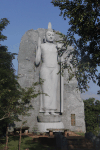
Large Buddha statue. (937k)
From Wikipedia entry for Poḷonnaruwa:
Poḷonnaruwa (Sinhalese: පොලොන්නරුව, Poḷonnaruwa or Puḷattipura, Tamil: பொலன்னறுவை, Polaṉṉaṟuvai or Puḷatti nakaram) is the main town of Polonnaruwa District in North Central Province, Sri Lanka. It contains the royal ancient city of the Kingdom of Polonnaruwa.
The second most ancient of Sri Lanka's kingdoms, Polonnaruwa was first declared the capital city by King Vijayabahu I, who defeated Chola invaders in 1070 to reunite the country once more under a local leader.
The Ancient City of Polonnaruwa has been declared a UNESCO World Heritage Site.
Polonnaruwa is another example of the many sites of Ancient Civilizations that I visited during my travels.
The Polonnaruwa Vatadage is an ancient structure dating back to the Kingdom of Polonnaruwa of Sri Lanka. It was built in the 12th century. It is believed to have been built during the reign of Parakramabahu I to hold the Relic of the Tooth of the Buddha.
The "Velikkara" inscription stone on the left to this building is written in Tamil and explains that the protection of the Tooth Relic was done by a hired Tamil army, even in times of problems between the king and the Tamil.
The Nissanka Latha Mandapaya is a unique structure in the ancient city of Polonnaruwa in Sri Lanka. Built by King Nissanka Malla (1187 - 1196) and named after him, it is located near the western entrance of the Dalada Maluva, the area that contains the oldest and most sacred monuments in the city. A nearby stone inscription identifies this as the building used by Nissanka Malla to listen to pirith (chanting of Buddhist scriptures)
The Hatadage is another temple that was used to house the Tooth Relic. It was also built by Nissanka Malla.
The Galpota Inscription has the shape of a huge palm-leaf manuscript. It is also the work of Nissanka Malla. It is the largest stone inscription discovered so far. It describes the genealogy, heroic and altruistic deeds of the king. It says that the stone itself was transported from Mihintale, some hundred kilometers away.
Rankoth Vehera is the fourth largest stupa in Sri Lanka. It was built by Nissanka Malla of Polonnaruwa, who ruled the country from 1187 to 1196.
The Gal Vihara (Sinhalese: ගල් විහාරය), also known as Gal Viharaya and originally as the Uttararama, is a rock temple of the Buddha situated in the ancient city of Polonnaruwa in North Central Province, Sri Lanka. It was fashioned in the 12th century by Parakramabahu I. The central feature of the temple is four rock relief statues of the Buddha, which have been carved into the face of a large granite rock. The images consist of a large seated figure, another smaller seated figure inside an artificial cavern, a standing figure and a reclining figure. These are considered to be some of the best examples of ancient Sinhalese sculpting and carving arts, and have made the Gal Vihara the most visited monument at Polonnaruwa.
All pictures are © Dr. Günther Eichhorn, unless otherwise noted.











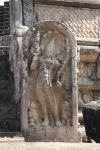




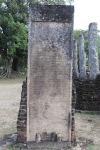

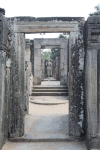

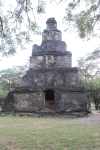
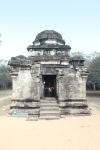


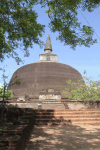

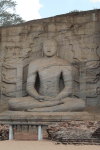
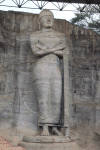




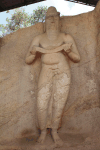
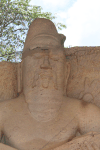
This page contains 34 pictures

Main page for ශ්රී ලංකා/இலங்கை (Sri Lanka)
Page last updated on Mon Jan 20 14:35:58 2020 (Mountain Standard Time)
Polonnaruwa on gei.geichhorn.com